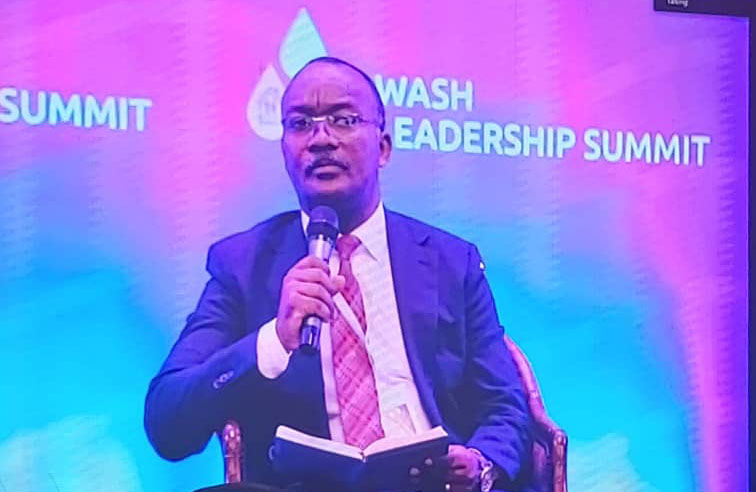
National Water and Sewerage Cooperation (NWSC) Managing Director Eng. Dr. Silver Mugisha shared the success story of Uganda’s water utility at the global stage, positioning the corporation as the continent’s role model in service delivery.
Dr. Mugisha was among the panelists at the Eastern and Southern Africa Leadership Summit on WASH underway in the Ethiopian capital of Addis Ababa, courtesy of the World Bank and the Ethiopian Government.
The two-day summit brought together ministers of finance and water, development partners, and private sector leaders for in-depth discussions about advancing systems change as a pathway to universal WASH access in Africa.
The discussion where Dr. Mugisha, who is president of the African Water Association (AfWA), explained NWSC’s capital investment plan, including the post-Covid-19 recovery modes, primarily centers around five strategic actions of the systems change approach: addressing sector-level governance bottlenecks and re-aligning sector-wide incentives.
During the panel discussion, Dr. Miugisha shared his experience tapping the domestic capital market to better serve the population with improved water services during the turbulent COVID-19 pandemic.
According to Dr. Mugisha, NWSC attained the Global Credit Ratings (GCR), a long-term national scale issuer rating of AA (UG), which implies that NWSC has very high creditworthiness and is able to utilize the funds it receives for a specific purpose.
On the pathway forward and creditworthiness of NWSC, the MD discussed the bankability of NWSC, the utility’s collection efficiency, which stands at 98%, and the response rate, which he said is at 60%.
Dr. Mugisha said that NWSC has experienced tremendous expansions due to a robust strategic plan that has enabled the corporation to expand its footprint from 4.5 million to 18.5 million people, which is projected to increase to 28 million by 2028.
He said all these have been achieved due to the enabling legislation framework that the board, managing director, and management have the right competence and strategic intent to drive the corporation in the right direction.
Today, NWSC is among the few government-owned institutions running a profitable business after many were privatized.
Dr. Mugisha said that NWSC is now focusing on social equity and environmental protection measures as part of its corporate governance agenda.
The MD explained that NWSC has in place a good track record of performance, including an agenda setting strategic and tactical action plans and a 3-year corporate plan to drive its service to the people of Uganda.
He also noted that corporations have been critical in accounting for the people of Uganda through service delivery and cited performance accountability instruments in place, including performance contracts with the Government of Uganda, internal performance contracts, operational and financial indicators, and monitoring and evaluation.
The number of towns under NWSC jurisdiction has increased from 23 to 268 and is expected to increase to 350 by 2028, Dr. Mugisha said.
He said that a predictable tariff protection instrument has enabled the utility to protect the tariff from external economic shocks as a mitigation gap for service continuity.
He said the number of customer connections has increased from 296.000 to 874,000 and is expected to increase to 1,250.000 by 2028.
“Pipe network length has increased from 5,073 km to 22.000 km and is planned to increase to 32,000 km by 2028; annual turnover has increased from UGX 155 billion to UGX 519 billion and is projected to increase to UGX 700 billion by 2028,” he said.
In the last 10 years, the assets under the management of NWSC have increased from UGX 650 billion to UGX 4,100 billion.
Last week, Uganda’s deputy Speaker of Parliament, Thomas Tayebwa, commended NWSC for the apt use of USD 150 million.
In 2011 and 2019, the Ugandan parliament approved the loan from the French Development Agency (AFD) and other partners to construct the Katosi Water Treatment Plant in Mukono district between 2018 and 2021.
The deputy speaker toured the plant to ascertain firsthand the performance of the loan. He said he was impressed with the facility and its standards. He hailed this project as one of the country’s best-performing loans, unlike several others that have had challenges.

